The Difference an Angle Makes
It's easy to think of street or any sort of documentary photography as luck-based. For anyone who's spent an afternoon running around looking for nice frames to capture, you'll the element of chance at play in your work, both in the exposures you make, and the ones you miss. But part of luck in photography, like in many things, is about putting yourself in the best possible situation, to make those "lucky occurrences" more likely. In other words, setting yourself up for success.
This is one of the reasons that "working a scene," that is, finding light or an element you want to capture and waiting for the right subject in the right pose to hit the right part of the frame before you capture it—is so popular. (I'll write about this another time, as well as what "right" might mean in the sentence above.) But even in situations where you're not simply waiting for the decisive moment to occur, being as intentional as possible about your work and what's under your control can lead to drastically different outcomes.
I've often said that photography is an exploitative art form. There are implication to this, almost never more relevant than in a genre like street photography, where you're utilizing public subjects for your work. There's more to this than the surface definition, however. It's also about leveraging a scene to the desired effect.
Art is about a series of choices made by the artist, selecting and highlighting certain elements instead of others. How you compose a shot, what settings you use, even what lens you've got can make a huge difference to a final image.
Take this image for example:
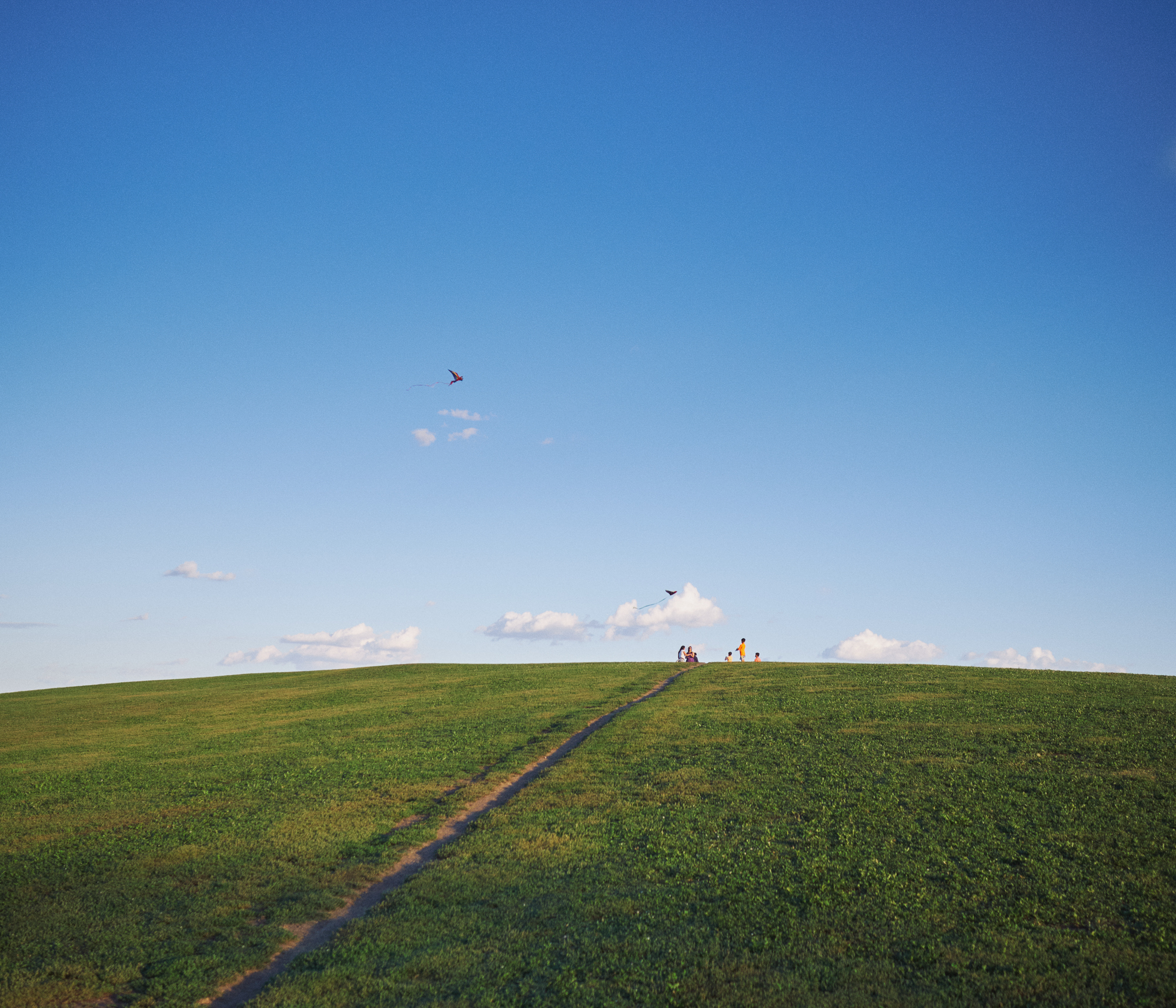
I had spent the day, a warm September afternoon, riding my bike up and down the lakefront trail that winds for miles along the Chicago coast. Heading South along this path, I notice a family at the top of a hill flying some kites. I took my bike off the path, and left it slumped sideways in the grass, jogging with my camera (which I'd kept slung around my shoulder the whole time) to catch the moment. This is a common thing for me; running down a block, or through a park, or up a beach, camera in hand, trying to track down or something that caught my eye before the moment passes. Of course, I'm not always successful. Knowing this, I snapped the image.
I like this shot. It feels pleasant to me, a warm late-Summer day, blue skies, green grass. The trodden-dirt path leading up the hill, presumably the one the family followed to get there. It's like stepping into that Windows XP wallpaper. I felt good about the image as I took it.
But now that I'd simply captured the moment, I started to think more about the sort of image I'd like to take. I started to circle the hill, and in doing so reversed the direction of the Sun relative to myself, completely changing the scene. Rather than baby blue skies, I wanted navy. I wanted a Sun star, the beams of light that extend from a light source at smaller apertures. I wanted to freeze this perfect jewel of a moment. I swapped lenses, from an 18mm to a 35mm, and walked a little closer. I changed my settings, and snapped another photo:
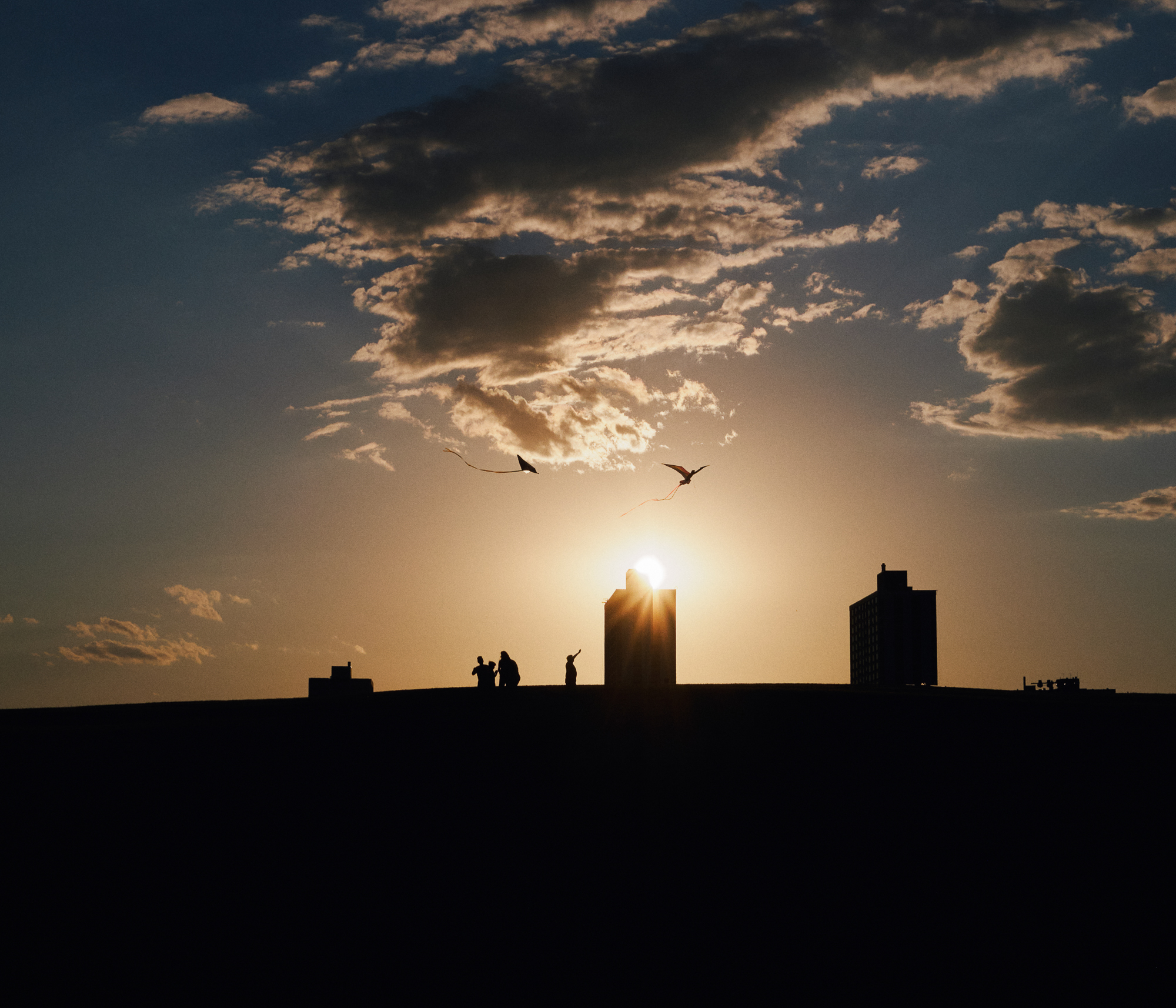
This is the exact same scene, the same family, the same hill. It's practically the exact same time, taken perhaps five minutes after the first frame. And yet the image is completely different. It feels different. It still feels like Summer to me, but the setting Sun gives it this indelible fleeting feeling to me. The Sun is setting, both the day and Summer are almost over, but we can still fly a kite. Looking at this image, I can almost feel the Sun on my face again.
(As an aside, I kept on making photographs that day, and ended up with other shots I still love, like the one on this "Members" page. Funny how you can get in a groove with photography sometimes.)
This might seem obvious with such an obvious example, either shooting into the Sun or away from it, but consider these photographs from this year:
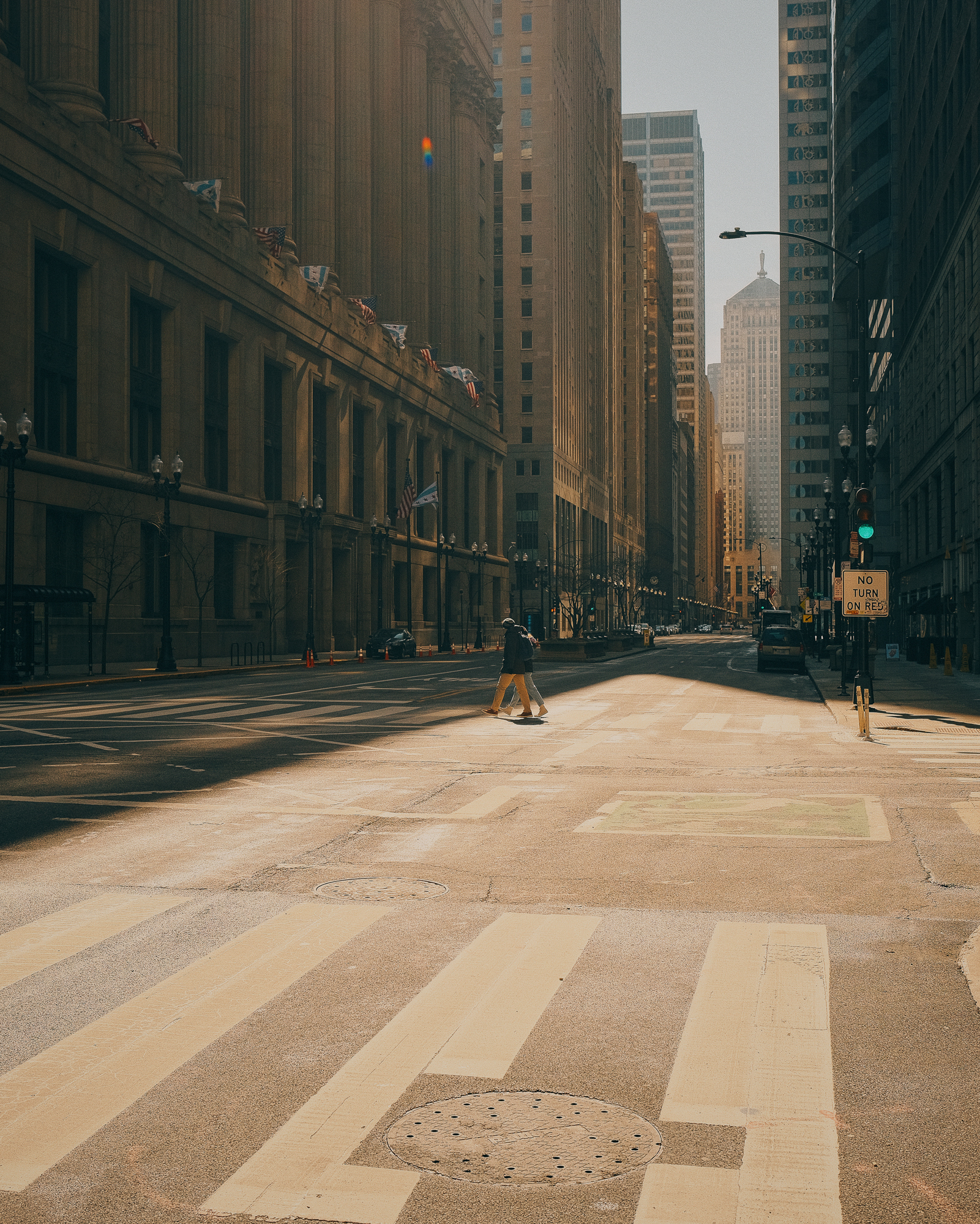
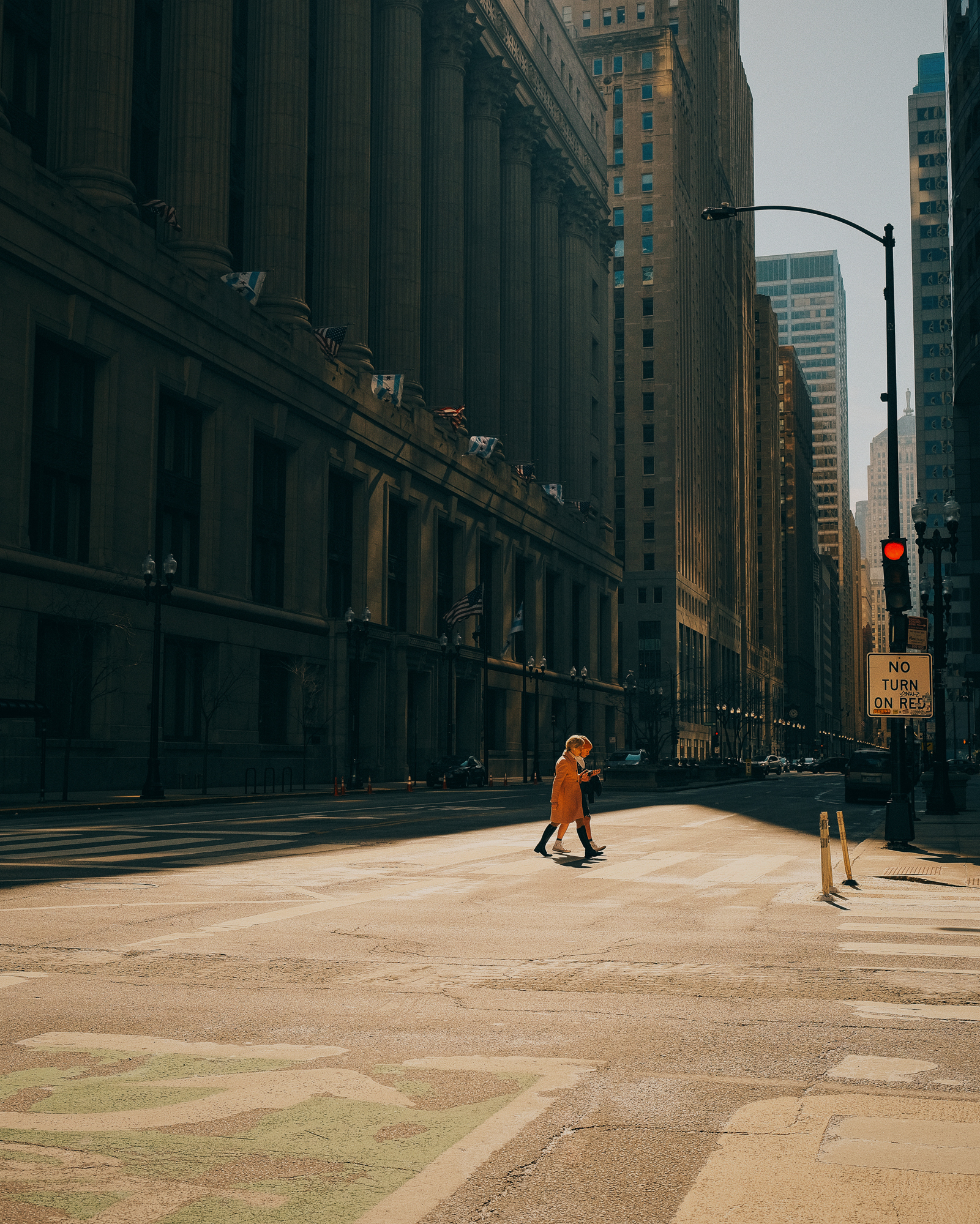
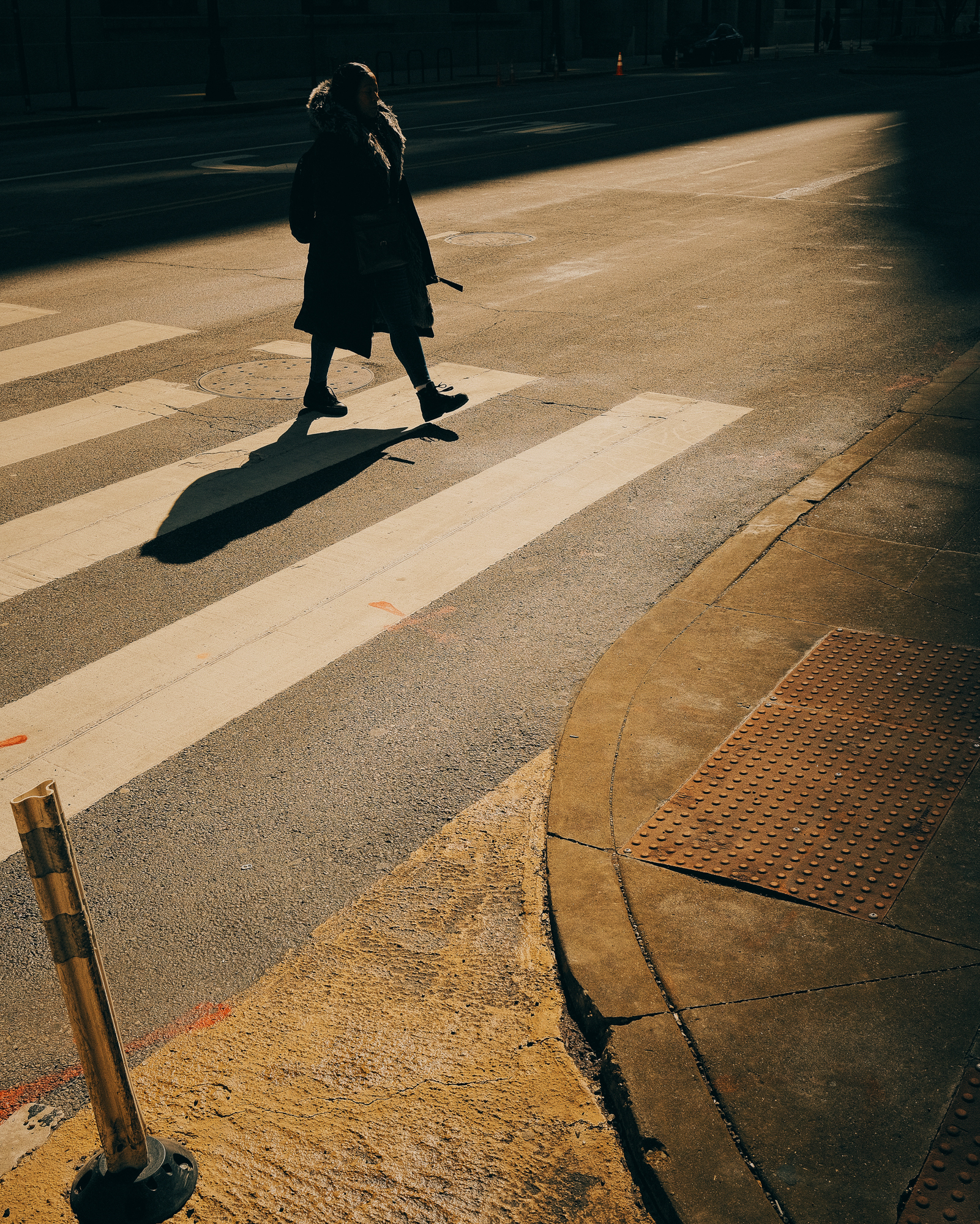
I'd gone downtown fairly early on a Sunday to capture these, hoping for hard morning light, which I received. I'd found this strip right inside the financial district, where the Sun rising up past the tall buildings created a little strip of light across a sidewalk; perfect.
I think these photos came out nice (especially the one of the two women crossing the street towards the right of frame—can you see what adjustments I made over time?), but looking at them now, I wish I'd done them a little differently. I chose a wider lens, 23mm, which I've been favoring as of late. It's a good street photography lens as far as I'm concerned, and a focal length I'm familiar with, but that lens choice coupled with my low framing maximized the amount of sunlit pavement we see, making the effect even less dramatic than it was in person.
Had I shot these with a tighter lens, pushed in closer towards the smaller end of the light, as well as used a higher angle (I'm tall, so I often try and get low consciously to avoid having the perspective of my photos the same all the time.) I would've made these a bit more dramatic. It's not better or worse per say, just different (I like the smaller people against the tall columns, for example).
I guess all this to say that intentionality in your art is always important, even when you primary concern is simply "making an exposure." Should the Sun be at your back, or at your front? How would the image change if you took a step forward, or got lower? Why'd you pick the lens you did, the settings you did?
I love grabbing one lens, picking some rough settings for the day, and spending a few hours just running around downtown, across streets, seeing what frames will open up to me. But it's good to remind myself to take the time, slow down, and consider how each of the choices I'm making consciously or not will affect the final result.
If you liked this post, please consider subscribing to my newsletter, Monochromatic Aberration, using the button near the bottom of your screen. I write about photograph, writing, and trying to live an examined life. Your support means a lot.
